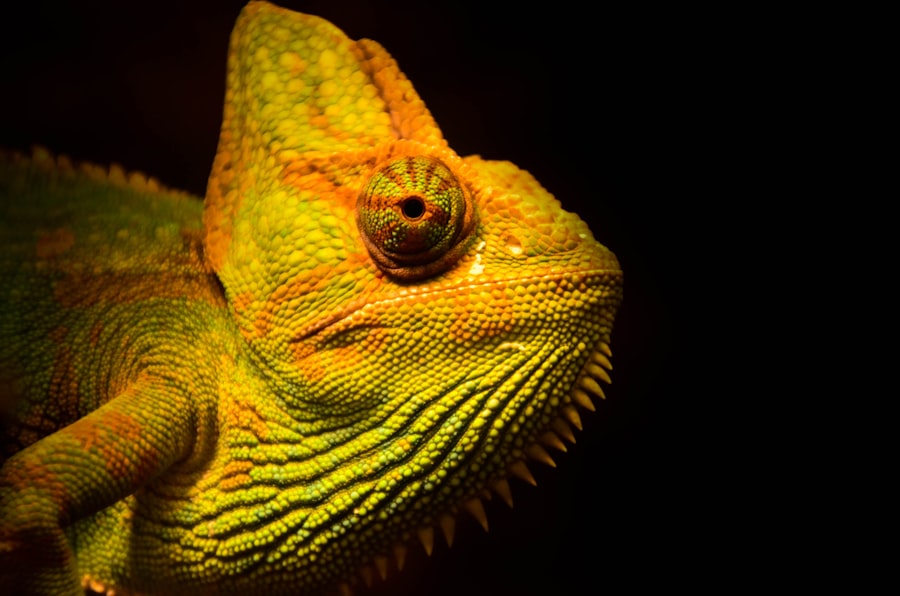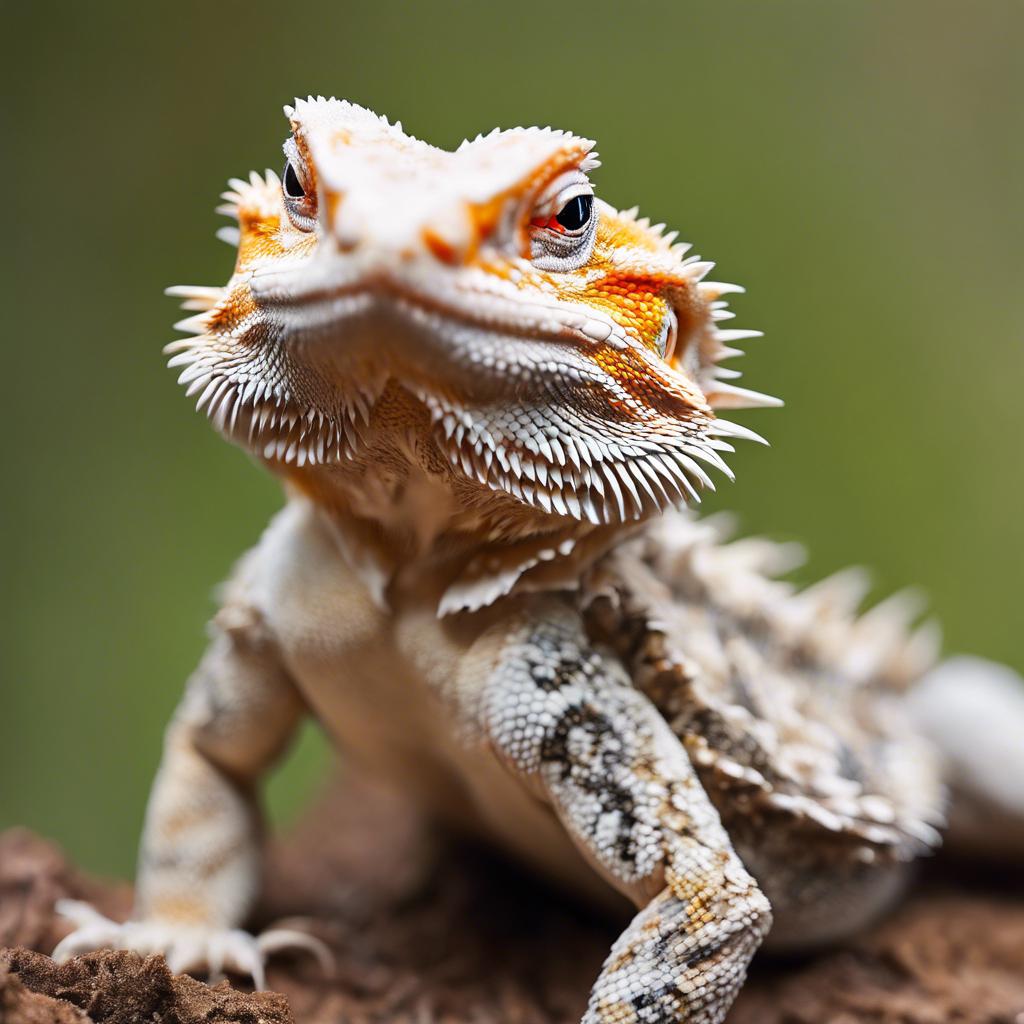Choosing the right substrate for your bearded dragon is crucial for their health and well-being. The substrate is the material that lines the bottom of their enclosure, providing a surface for them to walk on and absorb heat from. It is important to choose a substrate that is safe, comfortable, and easy to clean. In this article, we will explore the different types of substrates suitable for bearded dragons, the importance of choosing the right substrate, and how to properly prepare and maintain it.
Key Takeaways
- Bearded dragons require a substrate that mimics their natural habitat for optimal health and well-being.
- Suitable substrates for bearded dragons include sand, reptile carpet, and paper towels.
- Proper substrate is important for bearded dragon care as it can affect their digestion, hygiene, and overall health.
- Common substrates to avoid for bearded dragons include cedar, pine, and walnut shells.
- Choosing the right substrate for your bearded dragon involves considering their age, size, and behavior, and preparing and maintaining the substrate properly.
Understanding the Natural Habitat of Bearded Dragons
Bearded dragons are native to the arid regions of Australia, where they inhabit a variety of environments including deserts, woodlands, and grasslands. In the wild, they spend a significant amount of time basking in the sun to regulate their body temperature. They also dig burrows to escape extreme temperatures and predators. Understanding their natural habitat can help us choose a suitable substrate for captive bearded dragons.
Types of Substrates Suitable for Bearded Dragons
There are several types of substrates that are safe and suitable for bearded dragons. One option is reptile carpet, which is made from a soft material that mimics the texture of natural terrain. Reptile carpet is easy to clean and provides a comfortable surface for your bearded dragon to walk on. Another option is paper towels, which are inexpensive and easy to replace. Paper towels also allow you to monitor your bearded dragon's droppings for any signs of illness.
Tile is another popular substrate choice for bearded dragons. It provides a solid surface for them to walk on and helps maintain their nails at a proper length. Tile is also easy to clean and does not retain moisture, reducing the risk of bacterial growth. It is important to choose tiles that are not too slippery, as this can cause injury to your bearded dragon.
Importance of Proper Substrate for Bearded Dragon Care
Choosing the right substrate is important for the health and happiness of your bearded dragon. Improper substrate can lead to health problems and stress for the animal. For example, substrates such as sand, gravel, and wood chips can be ingested by your bearded dragon, leading to impaction. Impaction occurs when the substrate becomes lodged in their digestive system, causing blockages and potentially life-threatening complications.
In addition to impaction, improper substrate can also lead to respiratory issues. Dusty substrates such as sand or wood chips can irritate your bearded dragon's respiratory system, leading to respiratory infections. These infections can be serious and require veterinary treatment. Choosing a substrate that is dust-free and easy to clean can help prevent these issues.
Common Substrates to Avoid for Bearded Dragons
There are several substrates that should be avoided for bearded dragons. Sand is a common substrate choice that should be avoided, as it can cause impaction if ingested. Gravel and wood chips are also not recommended, as they can cause similar issues. Additionally, substrates such as coconut fiber or moss should be avoided, as they can retain moisture and create a damp environment that promotes bacterial growth.
Choosing the Right Substrate for Your Bearded Dragon

When choosing the right substrate for your bearded dragon, there are several factors to consider. The age and size of your bearded dragon will influence your choice of substrate. Younger dragons may benefit from a softer substrate such as reptile carpet or paper towels, while adult dragons may prefer a solid surface like tile. You should also consider your bearded dragon's behavior. If they are prone to digging or burrowing, a loose substrate such as reptile sand may be suitable, as long as it is not ingested.
How to Prepare the Substrate for Your Bearded Dragon
Before introducing the substrate to your bearded dragon's enclosure, it is important to properly prepare it. If you are using reptile carpet or tile, simply clean and disinfect the material before placing it in the enclosure. If you are using paper towels, make sure they are clean and free of any chemicals or dyes. If you are using reptile sand, make sure it is specifically designed for reptiles and does not contain any harmful additives.
Maintaining Cleanliness of the Substrate
Maintaining a clean substrate is essential for the health of your bearded dragon. Regularly spot clean the enclosure by removing any droppings or soiled areas. Depending on the type of substrate you are using, you may need to replace it entirely every few weeks or months. Reptile carpet and tile can be easily cleaned with a mild detergent and water, while paper towels can be replaced as needed.
Signs of Substrate-Related Problems in Bearded Dragons
It is important to be aware of the signs of substrate-related problems in your bearded dragon. If your dragon is experiencing impaction, they may show symptoms such as loss of appetite, lethargy, bloating, or difficulty passing stool. Respiratory issues can manifest as wheezing, coughing, or labored breathing. If you notice any of these symptoms, it is important to seek veterinary care immediately.
Providing the Best Substrate for Your Bearded Dragon
In conclusion, choosing the right substrate for your bearded dragon is crucial for their health and well-being. By understanding their natural habitat and considering factors such as age, size, and behavior, you can choose a substrate that is safe and suitable for your specific dragon. Properly preparing and maintaining the substrate will help prevent health issues and ensure a clean environment for your bearded dragon to thrive in. Prioritizing their health and well-being by providing a safe and suitable substrate is essential for being a responsible bearded dragon owner.
If you're wondering what substrate is best for your bearded dragon, you'll definitely want to check out this informative article on Reptile Wizard's website. They discuss the different types of substrates available and provide recommendations on which ones are safe and beneficial for your bearded dragon's health. From sand to reptile carpet, they cover it all. To learn more, click here.
FAQs
What is a substrate?
A substrate is the material that lines the bottom of a bearded dragon's enclosure.
What are the different types of substrates?
There are several types of substrates, including reptile carpet, paper towels, newspaper, sand, and coconut fiber.
Is sand a good substrate for bearded dragons?
No, sand is not a good substrate for bearded dragons as it can cause impaction if ingested.
What is impaction?
Impaction is a condition where the bearded dragon's digestive system becomes blocked, usually due to ingesting a substrate that is not digestible.
What is the best substrate for bearded dragons?
Reptile carpet, paper towels, and newspaper are the best substrates for bearded dragons as they are easy to clean and do not pose a risk of impaction.
Can coconut fiber be used as a substrate for bearded dragons?
Yes, coconut fiber can be used as a substrate for bearded dragons, but it should be avoided for young or small bearded dragons as they may accidentally ingest it.
How often should the substrate be changed?
The substrate should be changed at least once a week, or more frequently if it becomes soiled or wet.

